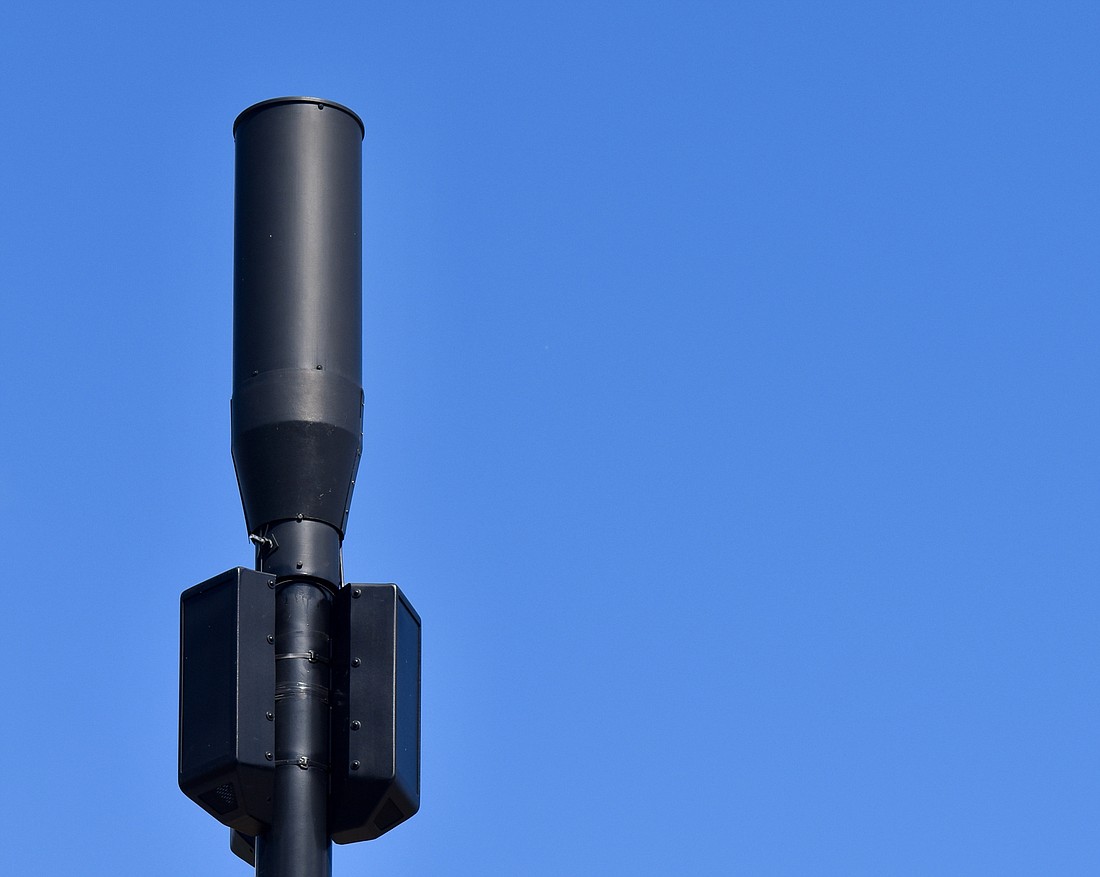- November 27, 2024
-
-
Loading

Loading

Better connections for Verizon customers on the north end of Longboat Key could be about a year away after Town Commissioners approved a plan to construct a network of nine small-cell poles to alleviate years of spotty service.
Concluding a series of public hearings that began in November, Town Commissioners on Monday unanimously voted to approve a site-development plan and a special exception to open the door for Verizon’s request.
Still to come are state and federal regulatory filings and local building permit approvals.
Kerry Burrows, a representative of Verizon, told commissioners that filings with the Federal Communications Commission and the Federal Aviation Administration typically take 120-160 days to complete, and work on those couldn’t begin until Longboat Key’s approval was granted.
Along with final approval for use of state right of way along Gulf of Mexico Drive for seven of the nine poles, coordination with Florida Power and Light and procurement of materials to meet the town’s requirements, Burrows said the new network would likely take until the first quarter of 2023 to complete.
“These are custom poles that need to be ordered because they are, in fact, out of the norm,’’ Burrows said. “Generally, we would have put a higher pole in, but to make sure we kept with the ordinance, now these are going to be custom-made poles. That will add a little bit of time with the factors as well.’’
Town specifications set in 2019 call for poles no higher than 35 feet along Gulf of Mexico Drive and 25 feet on town rights of way in neighborhoods. Seven of the taller poles are planned on the west side of Gulf of Mexico Drive, from about North Shore Road to the 5000 block.
The two neighborhood poles drew the most opposition based on aesthetics, property values, visibility and potential health issues.
Resident Deborah Cooney, speaking behalf of the Chiles Group, owner of MarVista Dockside, said a cell pole proposed for the corner of Lois Avenue and Broadway Street would not be a welcome sight for customers arriving at the restaurant and she asked if it could be moved 20 feet south to accommodate.
“Please consider this tower will not represent well,’’ she said, adding that such a facility isn’t in keeping with the character of Longbeach Village.
Residents of Binnacle Point Drive lined up to oppose a pole proposed on the south side of their street, opposite of a series of homes. As they had at a Planning and Zoning Board meeting Feb. 15 the topic, they pointed to a bald eagle nest across the street and urged changes.
Resident Jim Smith said he spoke to an engineer acquaintance about the Verizon pole locations and came away with the belief that location adjustments could be made.
“Engineers do that, they move things,’’ he said. “It’s maybe not a one-stamp all, this is how it is. If we move this one, it’s going to affect all the others, I believe that probably will happen, but I believe there can be some tweaking to accommodate that.’’
Since the small-cell proposal was first made in November, Verizon has stuck with its original locations for the nine poles, saying the town’s 25-foot and 35-foot height limits made demands on the network design.
Darwin Feliz, a Verizon engineer, said each of the poles is interdependent and that moving one would have a cascading effect. He said additional poles could also be required to fill gaps left by moving pole locations.
Mike Murphy, director of operations for SMW Engineering Group, a consultant with Verizon, said co-locating cell-service equipment on town light poles wasn’t feasible, leading to the plan to erect the nine poles.
While customers of Verizon, including the town itself and its first responders, will initially benefit from the new network on the north end, company officials said their equipment is designed to accept another company’s gear. But, they said, a company such as AT&T or T-Mobile would have to come to a business agreement with Verizon, and the locations of the poles would have to mesh with the other company’s network needs. Potentially, other carriers could make a similar application to the town to erect their own poles, though the town's 60-foot spacing requirement and other specifications would still apply.
By federal law, local governments can’t ban wireless facilities and can’t regulate them on the basis of location or radio-frequency concerns. The town can regulate height, style, color, spacing and exterior appearance. In 2013, Town Commissioners left open the small-cell option by banning large scale macro towers, which can stand 150 feet high.
Commissioners said they were sympathetic to some of the individual complaints but regarded the issue of cell-service connectivity on a higher level.
Attorney James Johnston, representing Verizon, reminded Town Commissioners the 2019 regulations essentially were the answers to residents’ complaints about aesthetics. Not only does Verizon’s application meet town rules, he said, but photos of Verizon equipment is used by the town as examples of what is acceptable.
“Someone said we hadn’t addressed the human residential needs, well, we have,’’ he said. “Your code does that. It’s design, siting, spacing requirements. That’s how it’s made for these facilities to have less of an impact on the surrounding property owners.’’